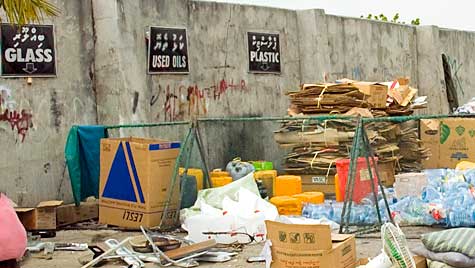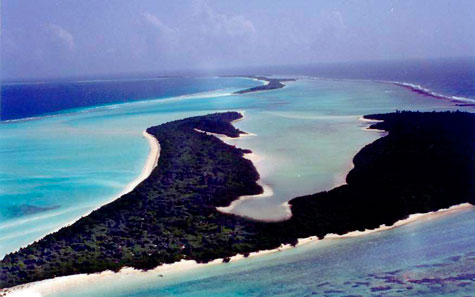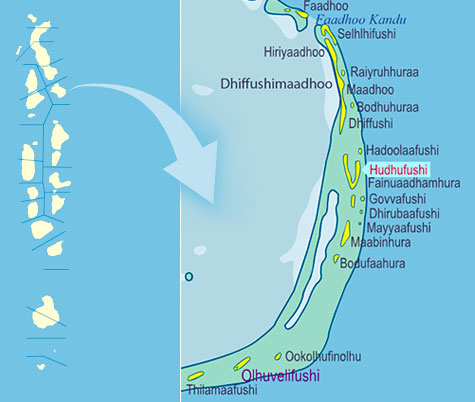THILAFUSHI: TOXIC BOMB IN THE OCEAN

Thilafushi aerial view
Thilafushi was originally a lagoon called ‘Thilafalhu’, with a length of 7 km and a width of 200 metres at the shallowest regions, situated a few kilometers from Male’. Reclamation of Thilafalhu started on 7 January 1992, in order to solve the problem of garbage generated in Male’. Thilafushi waste disposal centre was initially started as the main waste disposal centre for Male’. Presently waste from nearby atolls and resorts are also disposed there.

Thilafushi lagoon fill, with used batteries, asbestos, lead and other potentially hazardous waste mixed with the municipal solid wastes, is an increasingly serious ecological and health problem in the Maldives. Even though batteries and e-waste are quite a small fraction of municipal waste disposed at the Thilafushi, they are a concerted source of toxic heavy metals such as mercury, lead and cadmium. Chemicals can leach out into water table or sea and endanger the surrounding sea and reefs.

Waste collection center in Malé
Potentially hazardous wastes are not sorted at the collection or disposal ends in Thilafushi. However, nowadays at the disposal site at Thilafushi and in the main collection centre in Male, scrap metals such as copper, tin, zinc, steel, plastic bottle, cardboard boxes and used oil are sorted. According to the Custom Statistics scrap metal is the major export from Maldives to India.
There are no recycling facilities for the safe disposal for the hazardous waste such as used batteries, lead, asbestos and mercury in the Maldives. Asbestos are mainly found in the Maldives as corrugated asbestos-cement sheets or “A/C Sheets” locally know as Simenthi tinu (Cement roofing sheets).
A growing number of mobile phone and electronic equipment purchases in the country and rising number of tourist arrivals in the recent decades lead to an increase in disposal of used batteries and other potentially harmful electronic or e-waste. These are mixed with municipal waste and are inappropriately disposed in the Maldives.
Likewise, e-waste with other hazardous waste such as mercury, lead and cadmium in the used batteries can mix in the salt water at Thilafushi dump and cause even more danger.
The scariest part is that unlike the landfill, in a lagoon fill or sea fill, toxics chemicals can easily seep out into the coastal zone and enter into the lower level in the food web, algae, zooplankton, and fish. Once these toxics chemicals are released it is very difficult to remove them from the food web and can end up on our dinner plate in fish or lobsters.


